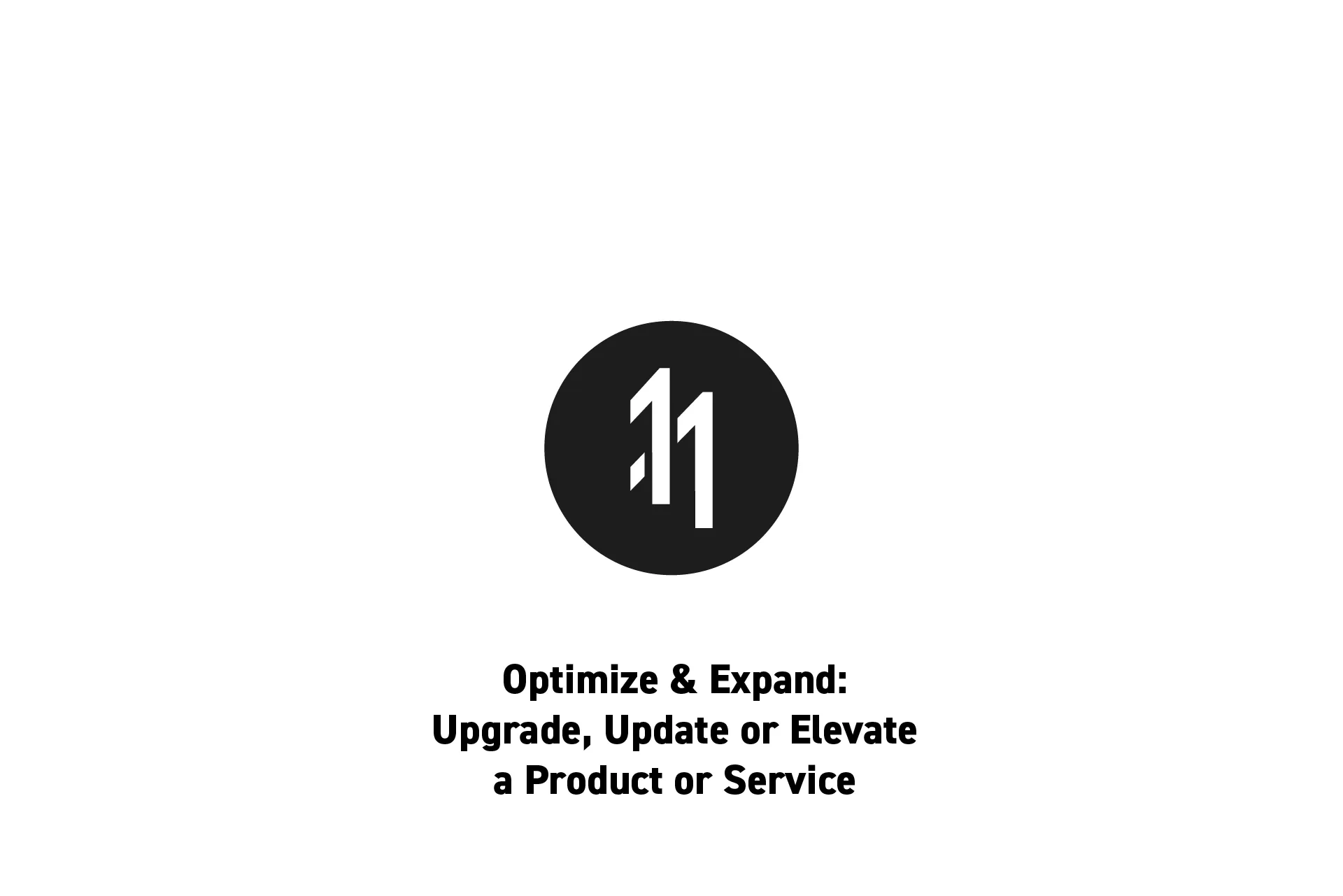Optimize & Expand: Upgrade, Update or Elevate a Product or Service
A guide for optimizing or expanding a product, service or experience to enhance performance, boost efficiency and deliver value to a target audience.

A guide for optimizing or expanding a product, service or experience to enhance performance, boost efficiency and deliver value to a target audience.
SubscribeDelasign Playbooks
delasign's process
The following guide describes the methods that we use as part of our iterative process and intended for entrepreneurs, companies or individuals that are seeking to expand or optimize an existing product, service or experience (i.e. an initiative) in order to boost efficiency, enhance performance or deliver augmented value to a target audience (i.e. customers).
Step One: Define

In order for an organization or contractor/agency/consultancy (i.e. a third party) to effectively be able to execute an optimization or an expansion, there must be a clear definition of the work that has to be done which leaves no space for ambiguity.
Questions and artifacts that will help you create a clear definition include:
- What are you seeking to expand or optimize?
- Why are you seeking to expand or optimize?
- Who is the target audience that will benefit from this expansion and optimization?
- What are the metrics (i.e. lead or lag metrics) that you are seeking to improve?
- Is there an existing user experience map, technology systems map, journey map or service blueprint and where is the optimization or expansion happening?
- Has any prototyping and testing taken place to validate the need and what were the results?
- What is the Go-To-Market (GTM) strategy for this optimization or expansion?
Step Two: Clarify

If you haven't already, design, prototype and test the expansion/optimization to validate that you are on the right track.
This process should end with a document that demonstrates the refined user experience map, technology systems map, journey map or service blueprint; the metrics (i.e. lead or lag metrics) that must be measured and what defines success as well as the work that has to be done.
This document should be written with the vision of translating it into a backlog.
It is important that you do not proceed until you or the organization are confident and have a clarified, crystal clear definition of the work that has to be done, how success will be measured and the impact that it has.
You may learn new things as part of this step which may change the definition of the initiative. If this happens, update the definition from Step One and validate it before moving to Step Three.
Step Three: Create
After selecting the members of your team or third parties that will execute the work, onboard them through a Sprint 0.
Sprint 0s are intended for teams to come together to discover the project and develop a backlog and project skeleton. This methodology empowers teams to efficiently execute and deliver the initiative through an agile project management framework known as scrum.
Please note that most initiatives are not designed well from their inception and need to be refined as they are developed and tested to make sure that they produce the right outcome.
These errors should be accounted for, may include updates to the codebase, technology systems map, service blueprint or the user experience map and are often captured during a Sprint Review or a Backlog Grooming ceremony.
Step Four: Launch

Launch the initiative and carefully measure and monitor its performance, as these metrics will reveal the secrets of what works, what needs to be changed or what should be removed.
Step Five: Hypercare & Knowledge Transfer

In the event that you chose to work with a third party, make sure to assign a period of 2-3 weeks at the end of the project where by:
- The agency or service provider is on call and is monitoring performance at all times to guarantee that everything goes smoothly (i.e. Hypercare).
- The agency or service provider educates an internal team on how the initiative has been optimized and expanded, how the initiative works and what's required to maintain it (i.e. Knowledge Transfer).
Looking to optimize or expand an initiative?
We would love to get to know you and see how we can help your organization with its goals and needs.
Looking to learn more about Innovation, Project Management, Design, Technology and Strategy?
Search our blog to find educational content on innovation, project management, design, development and strategy.
